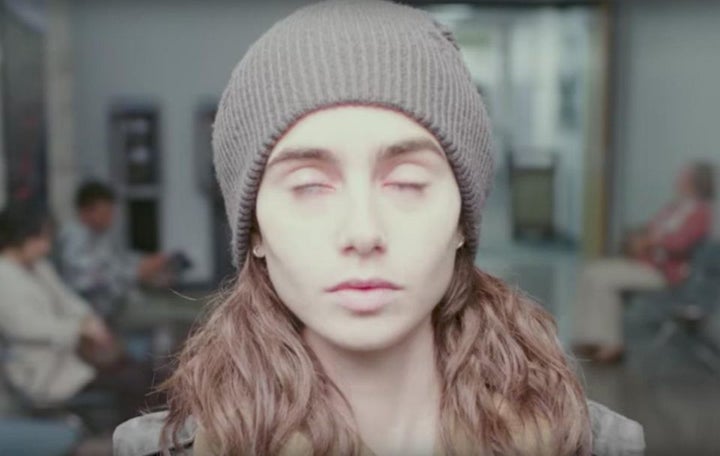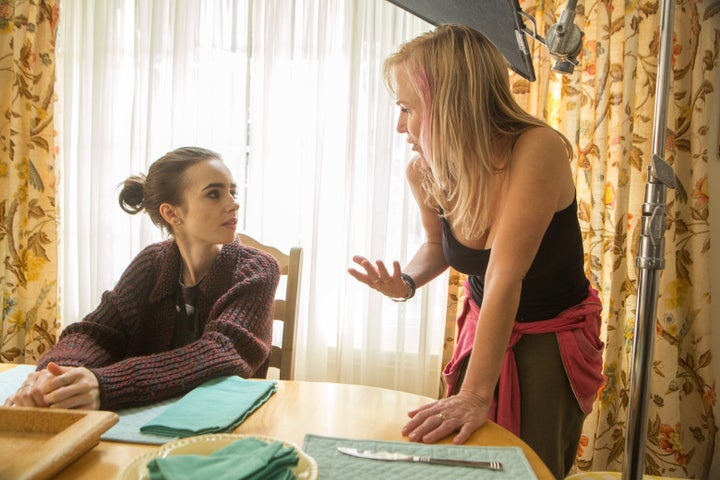
Before Netflix’s “To The Bone” even came out, the internet was flooded with articles, many by people who had experienced eating disorders and argued that it would just be another film that “glamourizes” them. So, after taking in the outrage, I did what any logical person would do: I watched “To The Bone.”
I can’t say criticism of the trailer had no impact on my viewing experience. Even while watching the lead character Ellen (Lily Collins), I was still thinking about the traumatic experiences bravely shared by people online. I ended up thinking that there had to be some huge mental break down or chilling scene in the movie for it to be an accurate portrayal. However, by the end of the film, my focus wasn’t on how uncomfortable the film made me feel. My focus was on the respect that I had gained for the people involved in it.
Glamourizing something means making a situation or condition seem “excitingly attractive”– even if the situation is dangerous. When people complained that the “To The Bone” trailer glamourized eating disorders, they were expressing fear that the film would make having an eating disorder seem appealing or less harmful than it is, whether by making the recovery process seem fun or equating having an eating disorder to some cool phase in adolescence. After viewing the film, I saw no reason for myself or anyone else to find Ellen’s situation attractive. If anything, the film portrayed a truth about anorexia that I haven’t seen reiterated in a long time: eating disorders aren’t just about the danger of looking too skinny - they’re about the danger of dying.

Oftentimes, films or TV shows about eating disorders try to convince victims to stop by showing them their sickly thin appearance. These films promote that the way to encourage victims is to tell them that they’ve only made themselves uglier – a tactic that seems pretty counterproductive considering many eating disorder victims and survivors, including Collins, were driven to the disorder by self-esteem issues. “To The Bone” emphasizes that eating disorders don’t just rob people of their looks. You’ll lose your life, and the experiences, feelings, and emotions that come with it. The reminders and references to death in the film tell the audience that eating disorders don’t just lead to an exposed ribcage. The real risk is death.

Actress Lily Collins and Director Marti Noxon
Instead of focusing on whether or not “To The Bone” attempts to glamourize eating disorders, viewers should be focusing on the effort put in by Lily Collins and the film’s writer/director, Marti Noxon. This film doesn’t show any intention by the actress and director to spruce up the topic of anorexia. Instead, it shows an actress and director’s will to return to a mindset that caused them years of pain in order to prevent other people from enduring it too. Collins actually brought two parts of herself into the film. On the one hand, she delved into her past as a teenager who suffered from bulimia and anorexia. On the other hand, through her character, Collins delves into the distant relationship she had with her father. In recent interviews for her book, Unfiltered, Collins opens up about previously feeling distant from her father, who was often touring throughout her childhood, and the difficulty of enduring two parental divorces, one between her father and her mother in 1996, and another between her father and stepmother in 2008. The film tackles two big issues, anorexia and divorce, pretty well, and shows that eating disorders can also stem from parental issues.

Before we label movies as too glamorous, we need to recognize that even if these films are covering serious subjects like eating orders, they’re still films, after all. In a documentary about a girl’s experience with bulimia, a romantic plot line would be unnecessary. In a film, a little romance can help move the plot forward and develop the character. There’s also an inherent beauty in film that shouldn’t be mistaken for glamourizing. Creating enticing visuals, even when covering topics that are far from, is nothing new. That’s what most directors strive to do. This isn’t to censor things or make them seem less difficult than they actually are. Directors create these stunning visuals so that the viewer can connect with them visually and then emotionally.
In an era where more movies are trying to tackle difficult situations experienced by large groups, it’s hard to hit the nail on the head. There can be so many variations of one experience. The experiences Collins and Noxon had with eating disorders may seem lighter than experiences others have gone through, or too cinematic for some to watch, but that doesn’t make their stories any less real. Instead of being quick to call someone’s experience too glamourized or censored, we need to understand that these experiences, and the work put in to portray them, are still legitimate, and deserve respect.
If you’re struggling with an eating disorder, call the National Eating Disorder Association hotline at 1-800-931-2237.